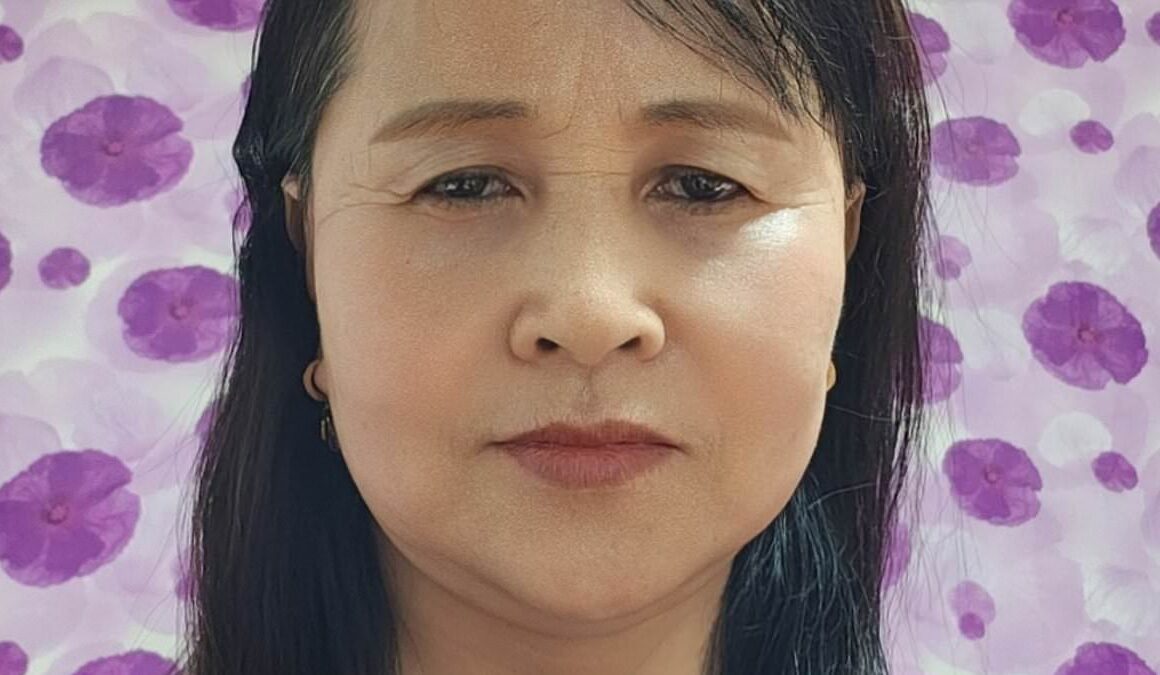North Korean children are being born without anuses, toes, or hands, as a mysterious illness dubbed ‘ghost disease’ spreads near Kim Jong-un‘s nuke testing site, according to a North Korean defector.
Youngran Lee, who lived near the Punggye-ri test site before she escaped in 2015. said in a chilling first-hand testimony that a horrifying disease has swept the region, killing and deforming infant children with doctors powerless to diagnose or treat it.
Mrs Lee said: ‘In Kilju County, civilians are suffering from diseases, not knowing why. In hospitals, doctors cannot diagnose it, and the patients are dying slowly with lingering illness.
‘It is not too drastic to say that having a child without an anus, toes, or hands was normalised in Kilju. There are patients with various cancers in every other house.’
The defector shared rare insight into life inside the ‘Hermit Kingdom’, expressing concerns about living so close to a nuclear testing zone. She described her house shaking, furniture falling from the walls as the military tested its weapons.

Youngran Lee (pictured) gave rare insight into life near a North Korean testing site

She said her son (pictured) was one of the people affected by a mystery disease

A guard stands at the entrance of the north tunnel at the nuclear test site at Punggye-ri, 2018

The purported demolition of the Punggye-ri nuclear testing site in 2018
Mrs Lee counts her only son among the victims of ghost disease.
She said that in North Korea, medication supplied by the UN is hoarded by senior government officials, and despite the promise of free healthcare, ‘the shelves are empty in pharmacies’.
So when her son developed a mild fever in October 2014, aged 27, she turned to black market medication, smuggled in from China.
But it failed to help and she took him to hospital.
She said: ‘A tuberculosis doctor told us that my son had holes in his lungs, measuring as big as 1.5cm and 2.7cm.
‘He also said he did not know why an increasing number of young adults were coming to the hospital.
‘I could not understand why this had happened to my son, and felt so helpless.
‘Furthermore, he had eight close friends, and they were all diagnosed with tuberculosis one by one from 2012, and died within four years.’
Mrs Lee spent her life-savings buying medications for her son, before fleeing to China in February 2015, hoping to find work to send more money home.
By August of that year, she’d arrived in South Korea, where she underwent mandatory training to prepare her for life in a free society.
She said: ‘As soon as I was released, I contacted my son to tell him to go to Pyongyang Hospital.
‘But the next day, he called back and said there had been official instructions to stop Kilju County tuberculosis and hepatitis patients from entering Pyongyang.
‘The only reason given was that this was for Kim Jong-un’s safety, and there was no proper explanation.’
She continued: ‘For two years, I transferred money to my son through brokers, believing that he was getting adequate care.
‘However, in May 2018, I lost my boy, my pride and joy.
‘My son died without ever reaching the hospital to receive a proper diagnosis.’
Mrs Lee said she had lived near a nuclear testing site before its demolition in 2018.
She said: ‘On the day the third nuclear test took place, a wall clock fell, and light bulbs shook. I thought it was an earthquake and ran outside.
‘All my neighbours were out as well. Shortly after that, at midday, the main broadcasting system announced that the third nuclear test was successful.
‘Then we realised that the military-controlled area in Punggye-ri was a test site.’
Locals danced in the street in celebration, but they would be among the first victim’s of North Korea’s nuclear programme.

The nuclear testing site was purportedly destroyed in 2018

Kim Jong Un meets soldiers during a visit to a western operational training base in North Korea

Kim Jong Un inspecting a major operational training base at an undisclosed location in March
Experts believe that radiation is the true cause of what’s been called ghost disease.
Nuclear scientist Joohyun Moon of Dankook University, in South Korea, described how radiation from the underground blasts could reach local communities.
He said: ‘As shock waves travel, they break the layers of the earth or create cracks.
‘After a while, a mixture of melted rock and radioactive material will cool down and solidify.
‘Radioactive materials contained in this compound can infiltrate into gaps or cracks caused by the explosion and flow to the surface, soil or groundwater.
‘If it rains near the test site, the rain can carry these radioactive materials into the groundwater.
‘Groundwater is connected to rivers, streams and surface water, releasing these radioactive materials into the outside world.
‘As it is part of natural circulation, it is very difficult to intervene and prevent it.’
Dr Moon said there were a number of ways for radioactive materials to then infiltrate the food chain.
People could drink the irradiated water or eat seafood from it, eat crops grown with the water, or consume milk or meat from cattle fed by contaminated grass.
The nuclear test site sits on the banks of the Changhung River, which itself feeds the Namdae River – the main water source for Kilju County.
‘Every household in Kilju gets their water supply from there,’ said Mrs Lee.
Dr Moon estimated over a million residents within a 40km radius of the test site could be affected.
He said: ‘It is safe to say that the residents near the test site will be under the influence of radiation for about 200 years.
‘The time period will increase if more nuclear tests are conducted in the same location.’
He added: ‘If the situation continues without adequate protection, these people will have a higher chance of having cancer, leukaemia, chromosomal aberration etc. than people in other regions.’
Youngran still lives with the damage in South Korea.

The Korean People’s Army conducts an artillery firing drill in March
She was one of five North Korean defectors from Kilju County tested for radiation in the South in 2016.
She said: ‘The test showed that the exposure level was very high, and the white blood cells were very low.
‘One of the group had an unbearable headache – they could not even lift their head, but in every test carried out in A&E, no cause was found.’
Her own situation is no better.
She continued: ‘I feel aches everywhere and cannot walk very well due to pain in my legs, and I was hospitalised six times in a year because of headaches.
‘The hospital could not find any reason behind it, but I cannot even open my eyes when I have a headache; I feel restless and suicidal.
‘I know many people from Kilju who are experiencing the same symptoms as me.’







